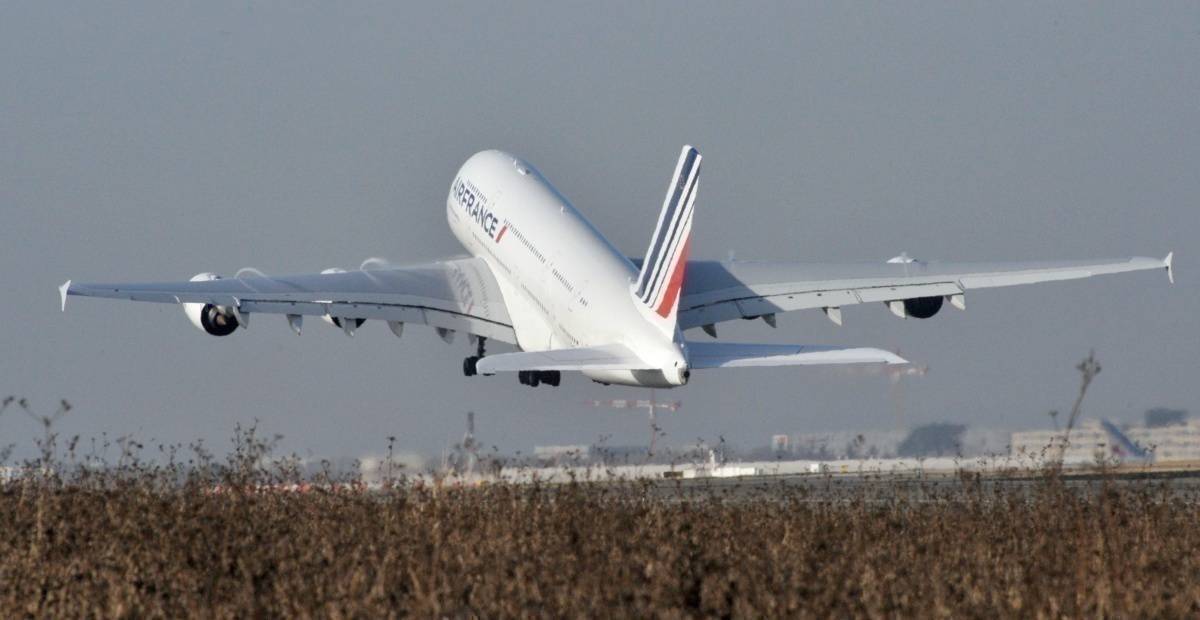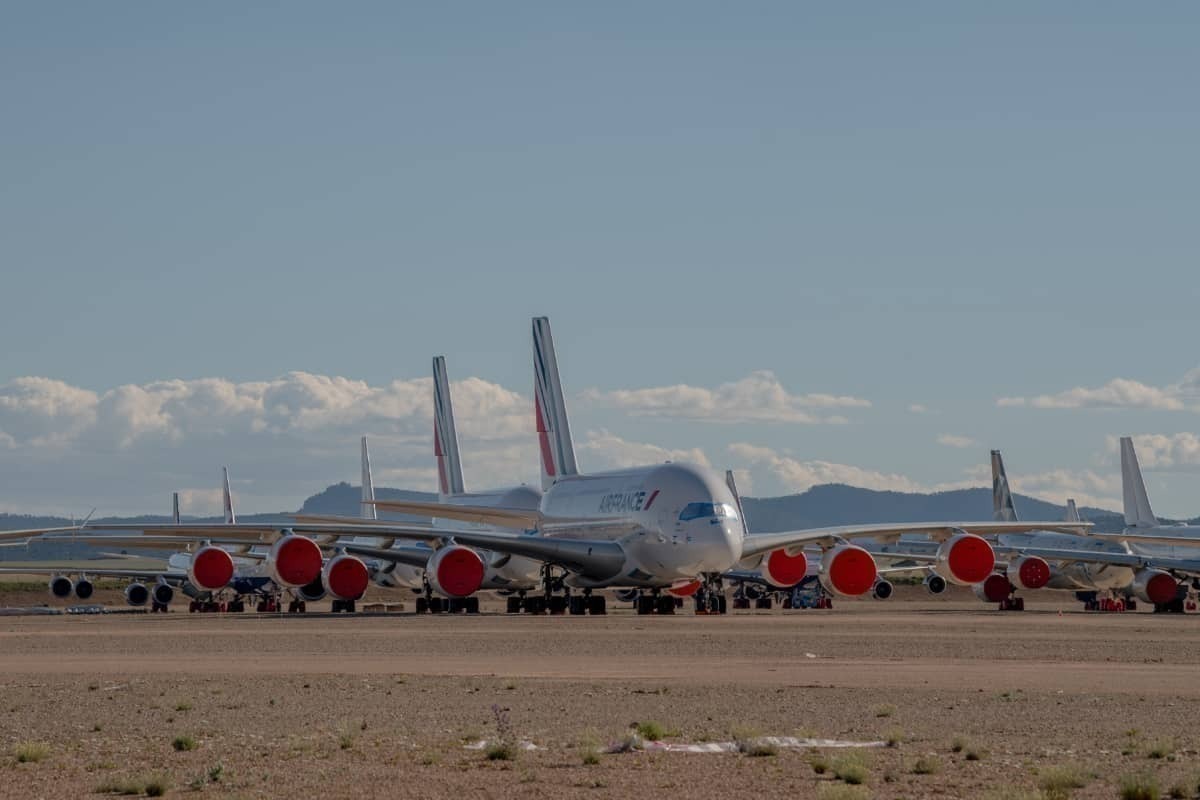
Air France just retired its last A380. After just a little more than 10 years in service, it was a few years sooner than the French air carrier had expected. However, the current climate made it necessary. In this article, we’ll take a look at Air France’s A380 history.

Air France gets its first A380
The A380 first made its way into the Air France fleet as a replacement for its Boeing 747-400 aircraft. At a list-price of $445.6m per aircraft and a maximum seating capacity of 800, the A380 was one of the most expensive yet largest planes around. That made it attractive for several carriers, like Air France, despite the volume of structural alterations needed to accommodate the aircraft.

Air France says that before it even received its first A380, it was pivotal in designing changes to make the aircraft a reality. On its website, Air France says it,
“…worked extensively with airport authorities to best adapt infrastructure and equipment on the ground…In addition, Air France crew and on-ground staff go through special training to adapt to the demands of this extraordinary aircraft.”
It ordered 12 of the aircraft, and its very first arrived on October 30th 2009. It was stationed at Paris Charles de Gaulle Airport and featured a three-class design capable of sitting 538 passengers. On arrival, Air France was particularly enthused about the new aircraft. It had worked with Airbus to tailor the most comfortable and quiet cabins for its passengers.

Air France’s A380s head into operation
On the back of Air France’s first A380 delivery, the first revenue-flight came on November 23rd 2009. Air France launched an A380 registered F-HPJA on a service from Paris Charles de Gaulle (CDG) to New York.
According to Air Fleets, in 2010, Air France acquired two A380s registered F-HPJC and F-HPJD. The following year it took delivery of a further two aircraft registered F-HPJE and F-HPJF. In 2012, it received F-HPJG and F-HPJH before F-HPJI came in 2013 and F-HPJJ in 2014.

JFK Airport in New York was Air France’s most lucrative A380 destination. Alongside that service, it operated the A380 to the following 15 destinations:
- Johannesburg, South Africa;
- Los Angeles, US;
- San Francisco, US;
- Washington, US;
- Mexico City, Mexico;
- Shanghai, China;
- Abidjan, Ivory Coast;
- Hong Kong;
- Miami, US;
- Tokyo, Japan;
- Montreal, Canada;
- Singapore;
- Atlanta, US;
- Dubai, UAE; and
- Abu Dhabi, UAE.
Game-changing aircraft becomes a burden
Air France was utterly enamored with its A380s when they first arrived. They embodied the idiom ‘bigger is better’ and helped Air France stick to its environmental targets at the time.

In 2009 in a company statement, the then-CEO of Air France Pierre-Henri Gourgeon spoke highly of Air France’s new jumbo strategy. Gourgeon said,
“Each A380 will enable Air France to save 12 to 15 million euros a year, which, in today’s depressed economic climate, provides the Company with the means to withstand the crisis. Air France will, therefore, be able to offer its customers even greater comfort while keeping its costs under control. Furthermore, the performance of the A380 is in line with the Company’s environmental commitments.”
While the airline had once called the A380 a cost-effective way to see it through a depressed economy, its cost is now the very reason why it’s unable to withstand the current crisis. But even before the pandemic, Air France was floating the idea of retiring the A380.

Cutting the A380 fleet in half
In 2018, Air France said that it would retire half of its A380 fleet by 2021. The reason was cost and reduced fuel efficiency that was rivaled by more recent aircraft models. In the A350-900 and Boeing 787 Dreamliner range, Air France saw more flexibility and a better potential for growth.
In 2018, incoming CEO Benjamin Smith said that Air France would stop the lease on five of its Airbus A380s. The remaining five A380s in the fleet would continue to fly but would be retrofitted with new cabins.
With this new strategy, Air France was trying to up the appeal of the aircraft while slowly phasing it out. It was an excellent idea, but in 2019, Air France officials were forced back to the drawing board to come up with a new plan. In the same year, Airbus said that it was planning to stop A380 production in 2021. Any carriers that wanted to keep the aircraft on would have to rethink their operational strategy.

On June 23rd 2019, Air France announced that a retrofit would be more expensive than it would be beneficial. The idea was shelved, and a retirement date brought forward. Now the entire A380 fleet faced retirement by 2022.
That still gave Air France some years of enjoyment, but the hope of the A380 future was short-lived. At the end of 2019, Air France-KLM invested in 10 A350-900s to replace Air France’s A380s, and on January 2nd 2020, the very first A380 retired.
2020: The year of Air France’s A380 demise
Recent events have since sped up Air France’s A380 retirement. Within a short six months, the entire fleet is now out of action, and cost had something to do with that. Facing a reduction in staff, fleet, and service, Air France will need to operate in a different way to combat the ill-effects of the pandemic.

On June 26th, the last Air France A380 left service. Flight AF380 was a final farewell to the aircraft type, completing a leisurely flight around France. Aircraft F-HPJH left its base in Paris Charles de Gaulle (CDG), on Friday at 13:57 UTC. It flew south around Montpellier and Marseille before returning north close to the Swiss border and back to Paris with a flight time of two hours and 22 minutes.
Without the A380 in its fleet, Air France should be able to keep on top of its maintenance costs while slowly building up its route offering again. Unfortunately, for everything it did well, the A380 just became too costly.
Do you think Air France was right to retire its A380 fleet? Will you miss it? Let us know your thoughts in the comments.